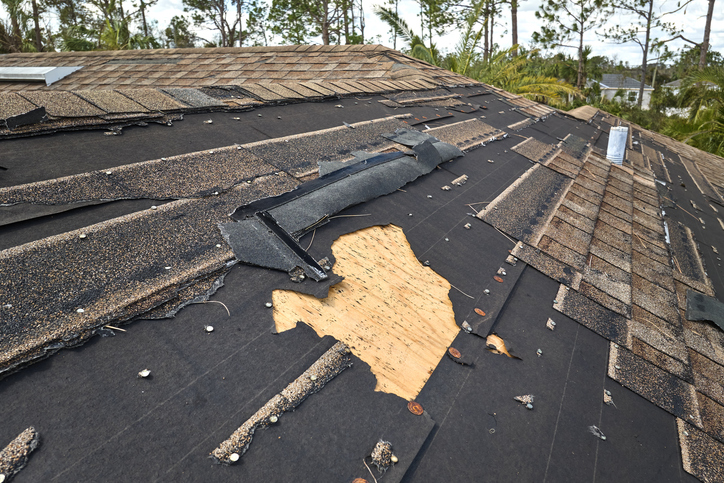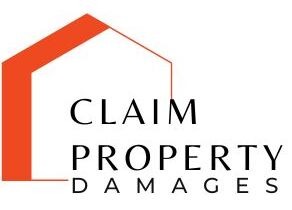
Your roof is one of the most important components of your home, protecting you from the elements and maintaining the structural integrity of your property. Proper upkeep is essential to avoid costly repairs and unexpected damage. By following roofing maintenance tips, homeowners can prevent leaks and water damage, extending the lifespan of their roofs.
At Claim Property Damages, we help homeowners and businesses deal with roofing issues and insurance claims. This guide provides expert roofing maintenance tips to keep your roof in top condition, prevent leaks, and safeguard your home from water damage.
Why Roofing Maintenance Matters
Regular roofing maintenance prevents minor problems from becoming costly disasters. Routine inspections and upkeep ensure:
- Extended roof lifespan by preventing premature deterioration.
- Leak prevention that protects interiors from water damage and mold.
- Reduced repair costs by catching issues early.
- Improved energy efficiency by maintaining proper insulation and ventilation.
Learn how Claim Property Damages can assist with roof repair claims.
Essential Roofing Maintenance Tips to Prevent Leaks and Water Damage
1. Inspect Your Roof Regularly
One of the best roofing maintenance tips is conducting biannual roof inspections, preferably in the spring and fall. Look for:
- Missing or damaged shingles that could allow water to seep through.
- Loose or deteriorating flashing around vents, chimneys, and skylights.
- Moss, algae, or mold growth, which indicate trapped moisture.
- Clogged gutters preventing proper water drainage.
2. Clean and Maintain Gutters
Gutters play a crucial role in preventing water damage by directing rainwater away from your home. Ensure they are clean and clear of debris:
- Remove leaves, twigs, and dirt regularly.
- Check for leaks or sagging gutters that need repair.
- Install gutter guards to minimize buildup.
Find out how Claim Property Damages helps homeowners deal with water damage claims.
3. Trim Overhanging Branches
Tree limbs hanging over your roof pose several risks:
- Branches can scrape and damage shingles.
- Falling limbs can puncture the roof during storms.
- Leaves clog gutters, leading to improper drainage.
Trim trees regularly to keep branches at least 10 feet away from your roof.
4. Check and Maintain Roof Flashing
Flashing around chimneys, skylights, vents, and roof joints prevents water from seeping into your home. Inspect and repair flashing that appears:
- Cracked, bent, or rusted.
- Loose or lifted from the roof surface.
- Improperly sealed, allowing water penetration.
5. Ensure Proper Attic Ventilation
Good attic ventilation helps regulate temperature and moisture levels, preventing:
- Ice dams in winter.
- Mold and mildew growth.
- Shingle deterioration from excessive heat.
Proper ventilation includes ridge vents, soffit vents, and gable vents.
6. Address Roof Leaks Immediately
Even small leaks can cause serious structural damage if left unattended. Signs of leaks include:
- Water stains on ceilings or walls.
- Dripping water in the attic.
- Peeling paint or warped drywall.
- Mold or mildew odors.
Contact Claim Property Damages for assistance with roof damage claims.
7. Schedule Professional Roof Inspections
While DIY maintenance is helpful, professional roof inspections ensure a thorough assessment. Experts can:
- Identify hidden leaks and potential weak spots.
- Recommend preventative repairs.
- Help with insurance claims for storm or water damage.
8. Invest in Quality Roofing Materials
When replacing or repairing your roof, use high-quality, weather-resistant materials such as:
- Asphalt shingles with a high impact rating.
- Metal roofing for durability and longevity.
- Tile or slate for superior water resistance.
9. Apply a Roof Sealant
A waterproof sealant adds an extra layer of protection against moisture. Consider:
- Silicone-based coatings for long-term durability.
- Acrylic sealants for UV and water resistance.
- Bitumen coatings for flat roofs.
10. Monitor Your Ceiling and Attic for Signs of Damage
Regularly check your attic and ceilings for:
- Water stains, mold, or mildew.
- Damp insulation.
- Soft or sagging spots in the ceiling.
Early detection of moisture buildup prevents costly repairs.
Learn more about roof insurance claims with Claim Property Damages.
How to Handle Roof Damage and Insurance Claims
1. Document the Damage
- Take clear photos and videos of the affected areas.
- Keep records of past roof inspections and repairs.
- Save receipts for temporary repairs and mitigation efforts.
2. Contact Your Insurance Provider
- Report the damage as soon as possible.
- Provide documentation and repair estimates.
- Avoid accepting the first settlement offer without review.
3. Work with a Public Adjuster
A public adjuster helps homeowners negotiate a fair insurance settlement by:
- Assessing the full extent of roof damage.
- Handling complex insurance paperwork.
- Maximizing your claim payout.
Claim Property Damages can help with roofing insurance claims.
Why Choose Claim Property Damages for Roofing Claims Assistance?
Experienced Roofing Claims Specialists
- We advocate for homeowners, not insurance companies.
- We ensure fair claim settlements and fight wrongful denials.
- We provide expert guidance throughout the claims process.
Hassle-Free Claims Assistance
- No upfront fees – We only get paid when you win.
- Fast and efficient claims management.
- Dedicated professionals to handle negotiations.
Contact Claim Property Damages today for expert roofing insurance claim assistance.
Conclusion
Proper roofing maintenance tips help prevent leaks, water damage, and costly repairs. Regular inspections, cleaning gutters, trimming trees, and scheduling professional evaluations extend your roof’s lifespan and protect your home.
When roof damage occurs, document everything, report your claim promptly, and seek professional assistance. At Claim Property Damages, we help homeowners navigate roofing insurance claims and secure maximum compensation.
Contact us today to ensure your roofing claim is handled professionally.
Don’t wait until a minor leak becomes a major problem—follow these roofing maintenance tips to protect your home!
